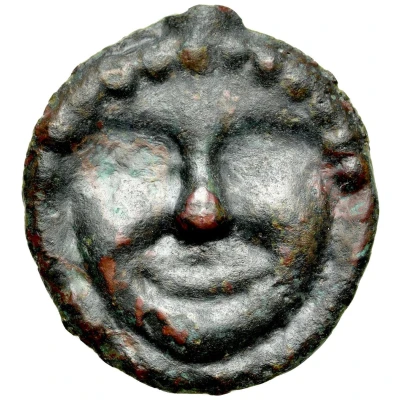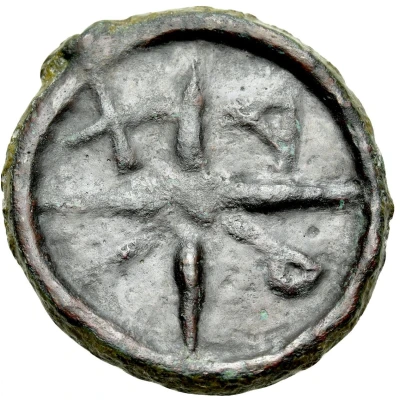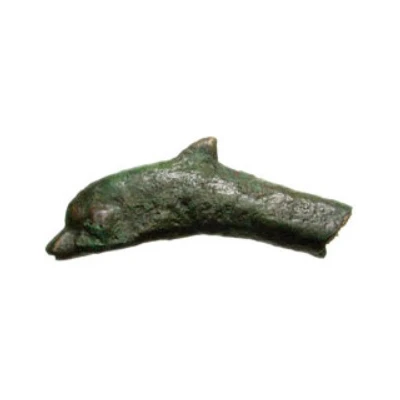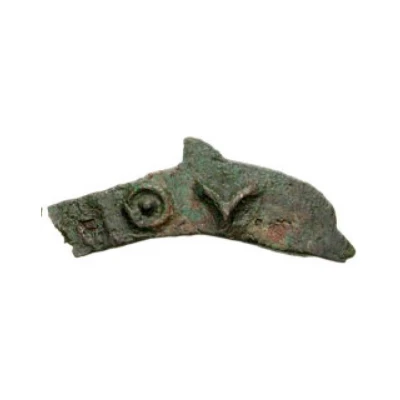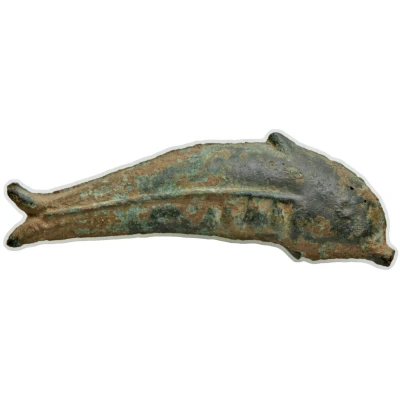
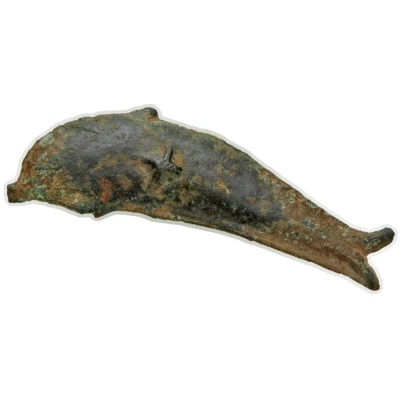

© Heritage Auctions
Dolphin 437 BC - 410 BC
| Bronze | 84.80 g | - |
| Issuer | Olbia (Skythia) |
|---|---|
| Type | Standard circulation coin |
| Years | 437 BC - 410 BC |
| Currency | Drachm |
| Composition | Bronze |
| Weight | 84.80 g |
| Size | 90 mm |
| Shape | Other |
| Technique | Cast |
| Demonetized | Yes |
| Updated | 2024-10-10 |
| Numista | N#378438 |
|---|---|
| Rarity index | 100% |
Reverse
Smooth convex surface with small + in relief.
Comment
Five specimens known, three are located in museum collections (Kiev Ukrainian Archaeological Museum, the British Museum and the Moscow State Historical Museum).Anokhin 173.
Founded in the late 7th century BC on the coast of present-day Ukraine, Olbia, was a colony of Miletus located at the junction of the Hyspanis and Borysthenes rivers and grew prosperous on trade between the nomadic Scythians and the Greeks. At first lacking sufficient quantities of silver or gold to institute a precious metal coinage, it instead used an innovative casting technique to produce a sizable and varied coinage in bronze. Among the earliest types is a series of denominations in the shape of dolphins, ranging in size from about 22mm and 1.5 grams to this immense piece, more than 90mm in length and weighing 88 grams. This was the largest "dolphin" type issued and today, while the smaller pieces are quite common, authentic examples are extremely rare, with only a handful of specimens extant. Olbia later acquired sufficient silver and gold through trade to institute a precious metal coinage, and is the likely mint spot for the Koson gold staters of the later first century AD.
Interesting fact
The Dolphin coin was used as a form of currency in the ancient Greek city of Olbia, which was located in the region of Skythia (modern-day Ukraine). The coin features an image of a dolphin on one side and a wheel on the other, which symbolized the city's connection to the sea and its role as a major trading hub. Despite being made of bronze, the coin was valued at a relatively high amount, weighing 84.80 grams, indicating the importance of trade and commerce in the region.
